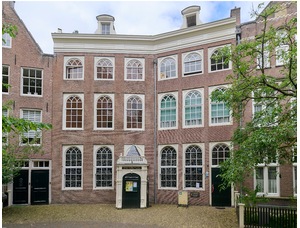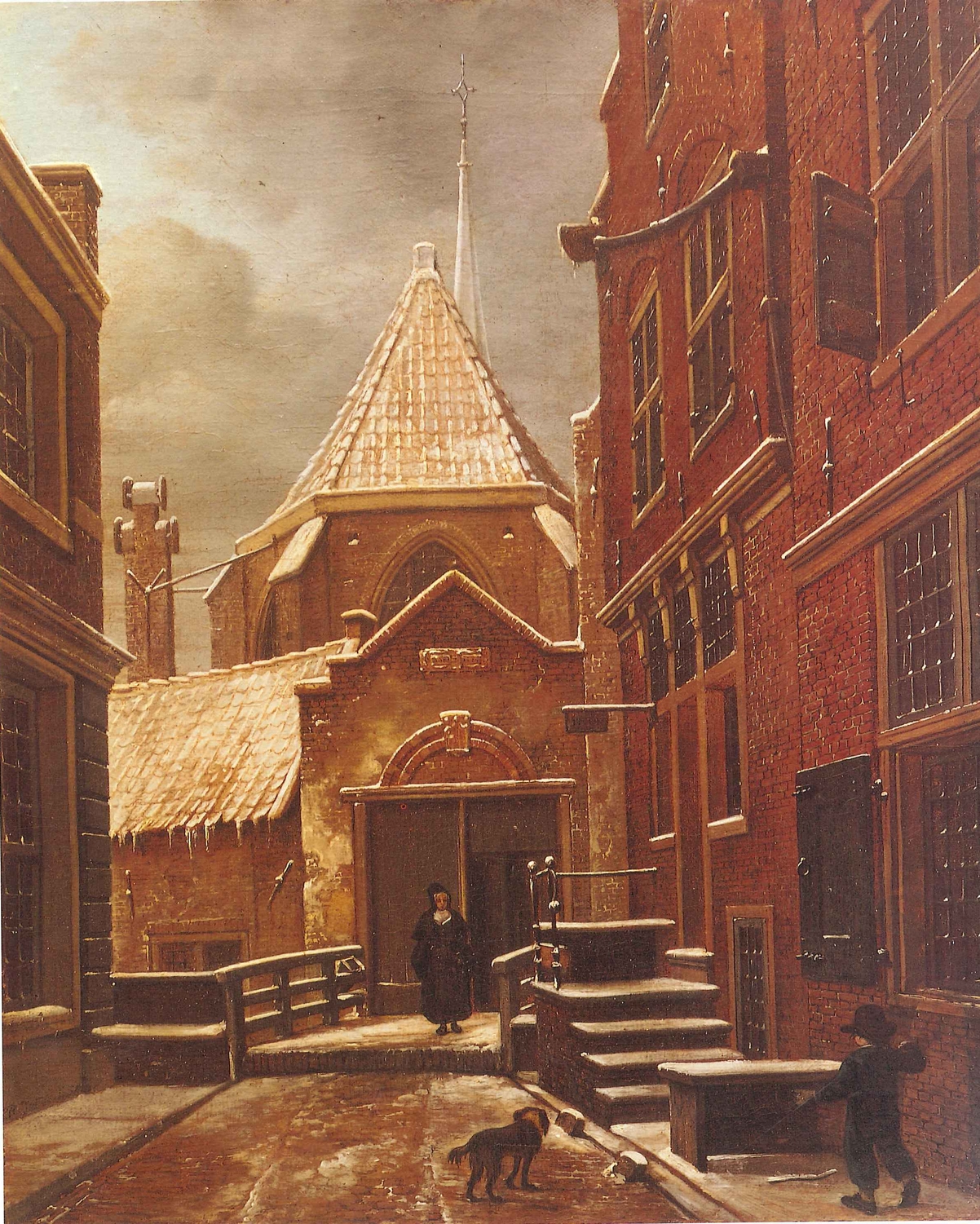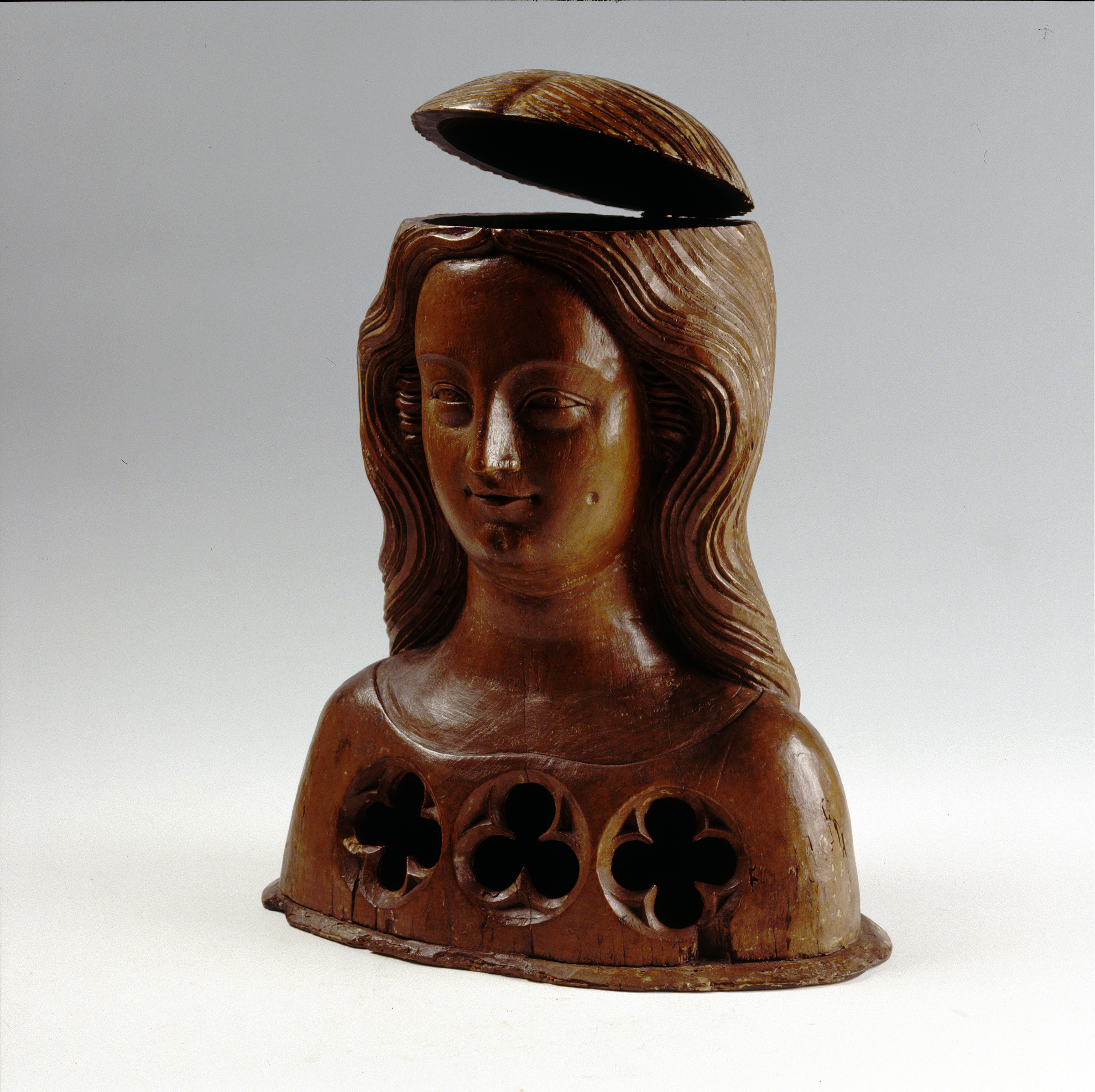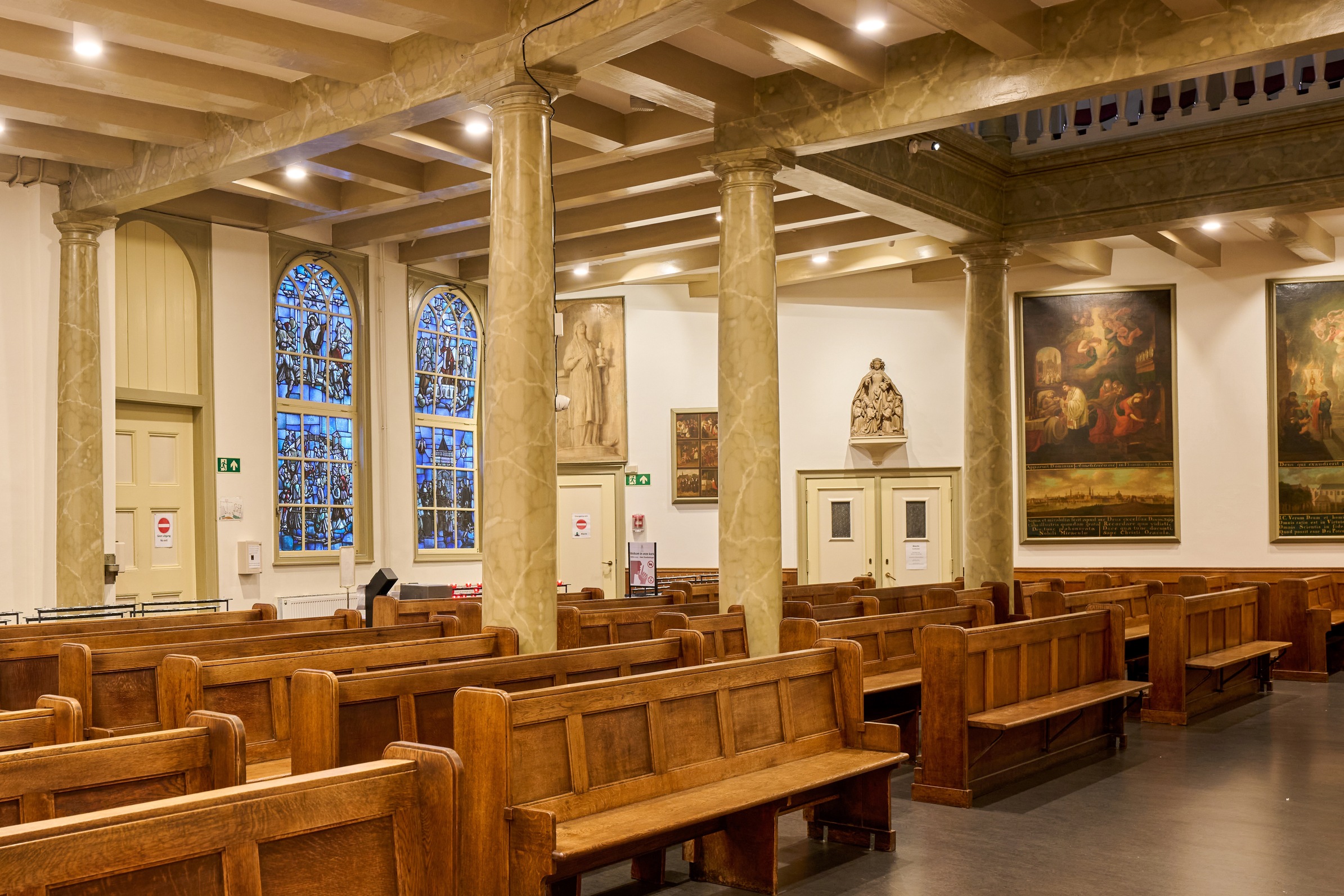Throughout the centuries, women have sought physical and spiritual protection within the Begijnhof. This statue of Saint Ursula beautifully symbolizes this. Every believer may take shelter under her mantle.
Location
Chapel of St John and St Ursula (Chapel of the Beguinage)
Begijnhof 29
Type
Clandestine church
Religious community
Roman Catholic Church
Object
Wooden statue of Saint Ursula who protects the faithful under her mantle
Maker and date
Maker unknown
ca. 1460-1470
Visit
On display during opening hours of the Beguinage chapel
The Begijnhof: residence and sanctuary for women
Hidden away in the busy city center of Amsterdam lies the Begijnhof (Beguinage), concealed behind a thick oak door. The courtyard was probably founded as early as 1307. It is a place where unmarried women and widows live together and support themselves. They do not take perpetual vows, but they do promise to obey their Mother Superior and to live chastely. They are ‘nuns in freedom,’ because they are free to leave if they marry. Surrounded by water, the courtyard can only be reached via the Begijnensteeg, making it a safe haven.
Before the Alteratie in 1578, the Beguines worshipped in what is now the English Reformed Church, until the city government forbade them from doing so. In 1671, they commissioned the Amsterdam architect Philips Vingboons (1607–1678) to build a hidden church, which they named the Saints John and Ursula Chapel, now better known as the Begijnhof Chapel. John and Ursula are both the patron saints of the church.
Alteratie
In 1578, the Catholic city government of Amsterdam was deposed. A Protestant city council took its place. The consequence of this change (Alteratie in Dutch) was that, from that moment on, the Reformed Church became the only church that was allowed to manifest itself publicly. Catholic churches and monasteries were confiscated and given new functions.
hidden church
Building in which hidden religious services were held in the Dutch Republic (1588-1795). Christian denominations outside the Calvinist church, such as Catholics, Lutherans, Mennonites and Remonstrants, had to practice their religions in hidden churches.
perpetual vow
A perpetual vow is a lifelong religious commitment in which a person irrevocably binds themselves to a religious order or congregation and professes the vows of poverty, chastity, and obedience. These vows are made publicly and remain in effect for the rest of the person’s life.
Mother Superior
The Mother Superior is a woman who leads or governs a female religious community or convent
patron saint
A patron saint is a saint who is regarded as the protector of a particular place, profession, association, or person.
Saint Ursula as patron saint
In the chapel stands an oakwood statue of Saint Ursula, one of the chapel’s patron saints. She wears a wide mantle under which the kneeling figures in the foreground take shelter. In the foreground on the left, Pope Cyriacus is kneeling (with the papal tiara), and on the right is King Aetherius (Ursula’s betrothed, with a crown). Both are part of the legend of Saint Ursula. The cardinal (with a hat on the left) and the nobleman (with a hat on the right) have not yet been identified. Saint Ursula is depicted here as a 'Mantle Madonna'. With her mantle, she protects believers of all ranks and classes. Ursula holds a book in her left hand and probably once held an arrow in her right hand as a symbol of her martyrdom. The hollow back of the statue likely once contained relics of Saint Ursula, making the statue a reliquary as well — just like the reliquary bust of Saint Ursula’s companion in Museum Catharijneconvent.
Martyrs
Those who have sacrificed their lives for the sake of their religion or principles.
reliquary
A reliquary is a container for the relics of saints. For example, it can take the form of a cross, a statue, a bust, a medallion, or a monstrance.
''Mantle Madonna'' or Madonna of Mercy
In art, the motif of Mary who protectively shelters the faithful under her mantle.
papal tiara
An exclusively papal headpiece, formed by three narrow golden crowns. In the three crowns, one sees either a reminder of the threefold dignity of the pope: priest, teacher, and king, or a reference to the threefold Church: the militant, suffering, and triumphant Church.
Ingrid Henkemans
Heritage Specialist Museum Catharijneconvent
Last edited
July 21, 2025
Sint Ursula as Mantle Madonna, unknown maker, Southern Netherlands, ca. 1460-1470, oak, 85x54x23cm. Collection HH. Johannes en Ursulakapel.
Interior and exterior: photography Robert Westera
De Begijnensteeg met de ingang van het Begijnhof, Rienk Jelgerhuis, ca. 1744 - 1806, oil on canvas, 53x44cm. Collection Amsterdam Museum.
Gezellin van de H. Ursula, unknown maker, Cologne, ca. 1340-1349, walnut, 43x36x22cm. Collection Museum Catharijneconvent.
Interior of the Beguinage Chapel facing the confessionals, photography Robert Westera, 2025.
Bouvy, D.P.R.A., Middeleeuwsche beeldhouwkunst in de Noordelijke Nederlanden (Amsterdam 1947) 88-89.
Dijk, G. van, Van “Der Beghinenlande” tot Begijnhof. De geschiedenis van het Begijnhof van 1307 tot heden (Amsterdam 2004) 8, 14, 69-70.
Leeflang, M. en K. van Schooten, Middeleeuwse beelden uit Utrecht. 1430-1530 (Utrecht 2012) 178-180.
Online sources
Verheggen, E., The Mystical Union Between Christ and His Brides: Devotional Prints as a Source for Catholic Women’s History
Last visited 12-08-2025










